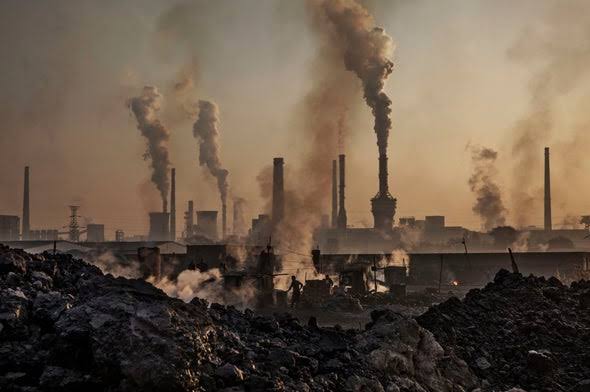NEW YORK,USA, Oct 21 – Despite increased climate ambition and net-zero commitments, governments still plan to produce more than double the amount of energy from fossil fuels in 2030, than the amount that would limit global warming to the Paris Agreement level of 1.5°C.
That’s according to the 2021 Production Gap Report, released this Wednesday by leading research institutes and the UN Environment Programme (UNEP).
Over the next two decades, governments are projecting an increase in global oil and gas production, and only a modest decrease in coal production.
Taken together, these plans mean that fossil fuel production will increase overall, to at least 2040.
For Executive Director of UNEP, Inger Andersen, “there is still time to limit long-term warming to 1.5°C [above pre-industrial levels], but this window of opportunity is rapidly closing.”
Ms. Andersen said that at the UN Climate Conference, COP26, taking place in early November in Glasgow, “governments must step up, taking rapid and immediate steps to close the fossil fuel production gap and ensure a just and equitable transition.”
“This is what climate ambition looks like”, she said.
This year’s report provides profiles for 15 major producer countries, showing that most will continue to support fossil fuel production growth.
Reacting to the report, the UN Secretary General highlighted recent announcements by the world’s largest economies to end financing of coal, calling them “a much-needed step” in phasing out fossil fuels.
For António Guterres, though, the report shows that “there is still a long way to go to a clean energy future.”
“It is urgent that all remaining public financiers as well as private finance, including commercial banks and asset managers, switch their funding from coal to renewables to promote full decarbonization of the power sector and access to renewable energy for all”, he said.
Countries surveyed plan to produce around 110 per cent more fossil fuels in 2030 than would be consistent with the 1.5°C limit, and 45 per cent more than what would allow a 2°C heating impact.
The report, first launched in 2019, measures the gap between governments’ production plans and the levels consistent with the Paris Agreement. Two years later, the size of the gap has remained largely unchanged.
Current plans would lead to about 240 per cent more coal, 57 per cent more oil, and 71 per cent more gas production in 2030, than would be consistent with limiting global warming to 1.5°C.
Global gas output is projected to increase the most between 2020 and 2040, continuing a trend of long-term global expansion inconsistent with the Paris Agreement.
Since the beginning of the COVID-19 pandemic, countries have directed over $300 billion in new funds towards fossil fuel activities – more than they have towards clean energy.
In contrast, international public finance for fossil fuels from G20 countries and major multilateral development banks has decreased. Currently, a third of these banks and G20 development finance institutions have adopted policies that exclude fossil fuel production in the future.
For lead author of the report, Ploy Achakulwisut, the research is clear: “Global coal, oil, and gas production must start declining immediately and steeply to be consistent with limiting long-term warming to 1.5°C.”
The report is produced by the Stockholm Environment Institute (SEI), International Institute for Sustainable Development (IISD), ODI, E3G, and UNEP.
More than 80 researchers contributed to the analysis and review, including numerous universities, think tanks and other research organizations.
Want to send us a story? Contact Shahidi News Tel: +254115512797 (Mobile & WhatsApp)


